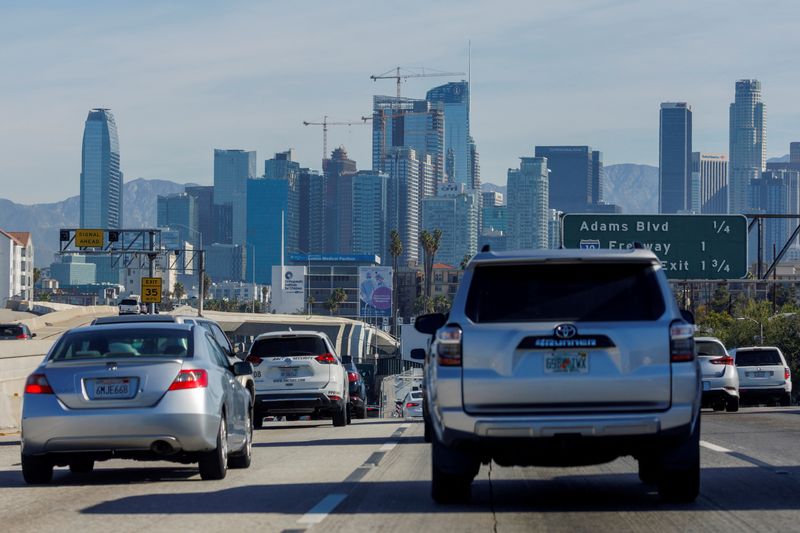
© Reuters. FILE PHOTO: Traffic moves along a freeway as vehicles travel towards Los Angeles, California, U.S., March 22, 2022. REUTERS/Mike Blake/File Photo
By Laura Sanicola and Erwin Seba
(Reuters) – Californian regulators voted Thursday to approve a plan to reduce the state’s carbon-dioxide emissions by 85% by 2045, reaching carbon neutrality then, including by cutting petroleum usage to one-tenth of the current level.
California’s environmental policies have led to drastic shifts away from petroleum fuels as state regulators have sought to improve public health and reduce environmental impacts of fossil fuel production. The state has also angered its fuelmakers, which argue its policies hurt fuel consumers.
Policy updates approved on Thursday were in the 2022 edition of a document called the Scoping Plan, which is revised every five years.
To achieve the 85% reduction in emissions, it requires the state to consider electrifying much of its energy usage, installing millions of heat pumps and deploying technology for carbon capture, utilization and sequestration, among other things.
Petroleum usage would have to come down by 90%, it said.
The regulator, the California Air Resources Board (CARB), said in the document that the plan would create 4 million jobs and allow the state to avoid $200 billion in pollution-related health expenditure.
The plan was needed to deal with the climate crisis that had manifested in the form of wildfires, drought and collapsing coastlines, it added.
“This plan doesn’t exist in a vacuum – its successes will really rely on implementation and rulemaking,” said CARB member Diane Takvorian ahead of the vote.
Many California residents and lobbyists from oil and transportation companies said in public comments on Thursday that they welcomed the changes in the plan. Some argued that the proposed policies were imperfect, however.
These included what critics said was over-reliance on nascent carbon-capture technology, slow permitting processes, reliance on bioenergy, and a structure for a market in credits that assigned high value to methane captured from cow manure and therefore promoted factory farming.
In January, California legislators are set to take up a proposal that would penalize refiners’ excess profits.
CARB will continue evaluating how refiners can continue to operate to export fuel, said CARB spokesperson Dave Cleghern.
Since 1990, 13 Californian refineries with a combined capacity of 3 million barrels per day (bpd) have closed. Current refining capacity in California is 1.7 million bpd.
The loss of more refining capacity could come in this decade, said David Hackett, chairman of the board of Stillwater Associates, a California energy consultancy.


Be the first to comment